Legacies of cotton, atomic age linger in soil
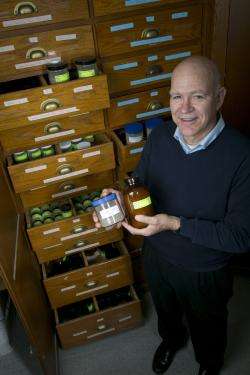
On the second floor of the Levine Science Research Center, in a tall wooden cabinet that could easily be mistaken for an antique dresser, Duke University professor Dan Richter keeps an unusual collection: nearly 600 jars holding hundreds of pounds of Piedmont soil.
Collected over more than 50 years from the site of a former cotton plantation in rural South Carolina, the jars are part of long-term study of how activities such as logging and farming have changed the soils on which we depend for food, feed, fuel and fiber.
Each jar represents a time capsule of soil conditions as acres of former cotton fields have turned back over to forest.
In the rolling clay hills of western South Carolina along Interstate 26 between Columbia and Spartanburg, the pine trees of Calhoun Experimental Forest—where Richter and his students work—grow on what was once farmland.
Here 19th and 20th century tenant farmers and sharecroppers grew cotton and other crops for more than 150 years. But cotton production began to collapse in the 1920s, and by the 1950s most of the area's cotton farms were abandoned.
More than a century of cotton farming took its toll on the region's soils. In that time, the Piedmont from Virginia to Alabama lost more than half a foot of topsoil to erosion, Richter said.
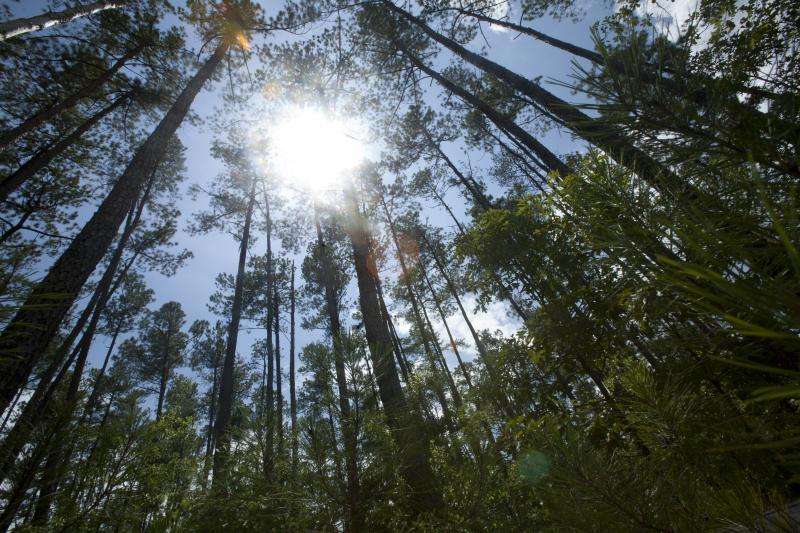
"Most of it ended up in streams and rivers," Richter said.
By the end of World War II, the area was so degraded that organic carbon in the upper 12 inches of soil—a major indicator of soil health—had dropped by almost half.
Trees slowly blanketed the bare, worn-out soil in pine needles and anchored it with roots in the decades that followed.
More than four tons of leaves and branches fall in a given acre of Calhoun Experimental Forest each year. As the growing forest adds dead leaves and other litter, the decaying plant matter returns nutrients to the once-depleted soil, holds water and prevents runoff.
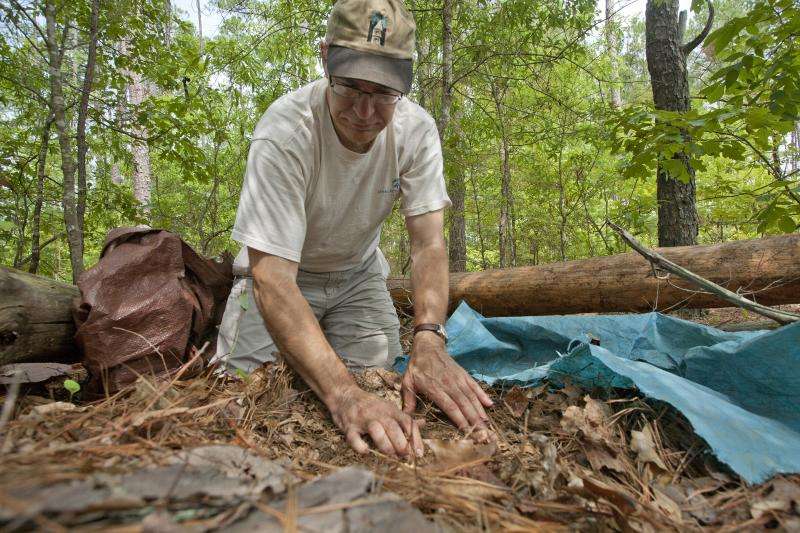
In the early 1960s, a USDA Forest Service scientist named Carol Wells started sampling the top two feet of soil to monitor its slow recovery, resampling roughly every five years using a steel punch tube to extract soil at four depths.
Richter took over the collection in 1987, shortly after coming to Duke.
The soil is air-dried and sifted through a mesh screen to filter out rocks, earthworms and roots. The end result is a complex mixture of sand, silt and clay, ranging in color from dark gray, tan and yellowish brown near the surface to orange, pink and red further down.
Richter and his colleagues have been studying the slow chemical changes in the different layers of soil with help from a unique technique—a form of carbon dating made possible by fallout from Cold War atomic bomb testing.
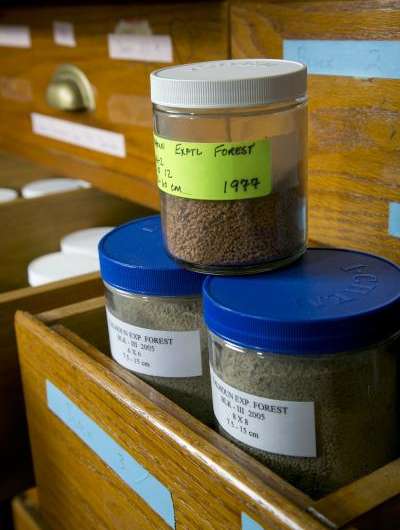
Above-ground nuclear weapons tests carried out by the United States, the Soviet Union, France and the United Kingdom in the 1950s and 1960s doubled the amount of radioactive carbon-14 in the atmosphere.
Carbon-14 has been slowly returning to baseline levels since aboveground nuclear testing stopped with the Limited Test Ban Treaty in 1963. But the Calhoun Experimental Forest trees continued to suck up carbon-14 from the air, in the form of carbon dioxide, incorporating it into their cells and depositing it in the soil.
The effects of the "bomb carbon," as it is sometimes called, haven't been all bad. By looking for excessive amounts of carbon-14 in the soil, scientists can identify carbon that accumulated after the last cotton crop was harvested in 1954 and the farmland started returning to forest, Richter said.
He lines up the jars containing the top few inches of soil and notes how they grow darker and healthier with time.
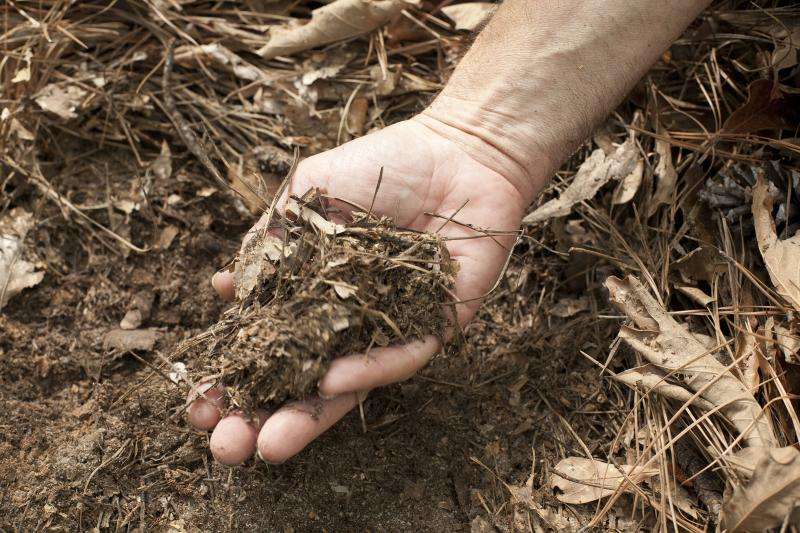
"You can see the brown and black organic matter coming back. The topsoil is being rebuilt by the forest after the plow destroyed it for more than a hundred years," Richter said.
With the world's population projected to increase from 7.4 billion to more than 11 billion by 2100, healthy soils will play a critical role in meeting the growing demand for food.
The results from Richter's bomb-carbon studies suggest that it will take the Piedmont soils many more decades to rebuild in the wake of King Cotton.
"That doesn't mean that Piedmont soils are completely shot. With attention and care you can bring them back," he said.
Provided by Duke University


















